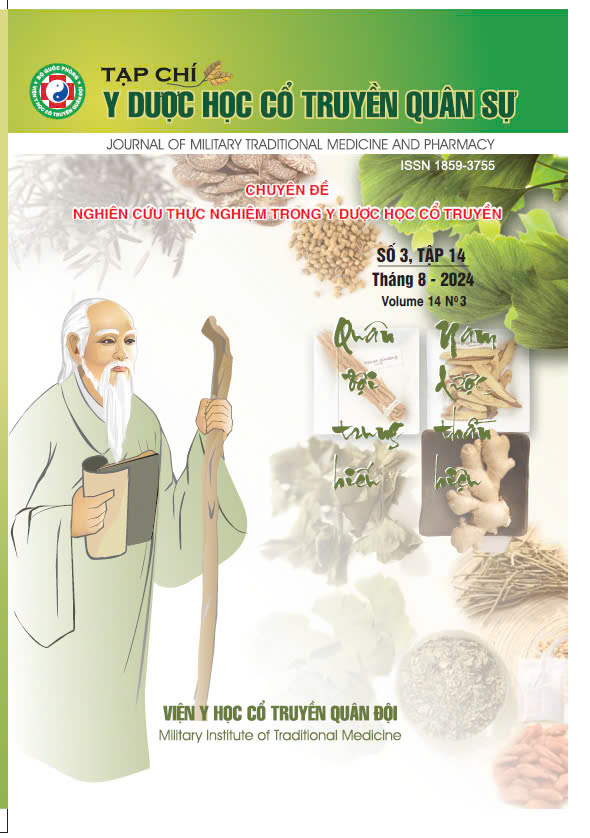ĐÁNH GIÁ ĐỘC TÍNH CẤP, ĐỘC TÍNH BÁN TRƯỜNG DIỄN CỦA VIÊN NANG AN DẠ TRÊN ĐỘNG VẬT THỰC NGHIỆM
Main Article Content
Abstract
* Ngày nhận bài: 30/07/2024
* Ngày phản biện: 19/08/2024
* Ngày phê duyệt đăng bài: 24/08/2024
Objective: The research aims to evaluate the acute toxicity on white mice and the sub-chronic toxicity of An Da capsules. Method: To study the acute toxicity on white mice by oral route using the Litchfield - Wilcoxon method. To evaluate the sub-chronic toxicity on white mice by oral route according to the guidelines of WHO and the Ministry of Health. Results: Acute toxicity and LD50 in white mice were not determined at a dose of 3093 mg/kg, 58.5 times higher than the expected dose for human; After 12 weeks of taking drug, there were not statistically significant different of the white rat’s general health condition, hematological and biochemical indicators, histological indicators of liver and kidneys between the control group and 2 treatment groups (p > 0.05). The increase in the AST and ALT level was statistically significant diffrerent in control group and 2 treatment groups and there were also statistically significant diffrerent between 2 treatment groups (p < 0.01). The ALT level in 2 treatment groups was higher than normal range. Conclusion: An Da capsules didn’t cause acute toxicity and LD50 couldn’t be determined; In sub-chronic toxicity experiment, An Da capsules are safe at both dose of 264 mg/kg/day and 792 mg/kg/day with duration of 12 weeks of research. After 12 weeks of experiment, AST and ALT level was increased in white rats, the ALT level was higher than normal range in white rats.
Article Details
Keywords
An Da capsules, acute toxicity, subchronic toxicity.
References
2. Salari N, Darvishi N, Shohaimi S (2021), “The global prevalence of peptic ulcer in the world: A systematic review and meta-analysis.,” Indian J Surg.
3. Hà Thị Mai Hương và cộng sự (2022), “Chất lượng cuộc sống của người bệnh loét dạ dày- tá tràng tại bệnh viện đa khoa tỉnh Vĩnh Phúc năm 2021,” Tạp chí Nghiên cứu Y học, số 156 (8), p. 310
4. Wang YC, Huang TL (2005), “Screening of anti-Helicobacter pylori herbs deriving from Taiwanese folk medicinal plants,” FEMS Immunol Med Microbiol . 1;43(2): pp. 295-300.
5. Bộ Y Tế (2015), “Hướng dẫn thử nghiệm tiền lâm sàng và lâm sàng thuốc đông y, thuốc từ dược liệu”. Số 141/QĐ-K2ĐT, 27/10/2015
6. Gerhard Vogel (2016), Drug discovery and evaluation Pharmacological assays
7. W. H. Organization (2013), Working group on the safety and efficacy of herbal medicine, Report of regional office for the western pacific of the World Health Organization., Springer.
8. Kazi Md. Mahmudul Hasan, Nasrin Tamanna, Md. Anwarul Haque (2018), “Biochemical and histopathological profiling of Wistar rat treated with Brassica napus as a supplementary feed”, Food Science and Human Wellness. Volume 7, 77-82
9. P.E. Sharp, M.C. La Regina, M.A. Suckow (1998), The Laboratory Rat, CRC Press.


